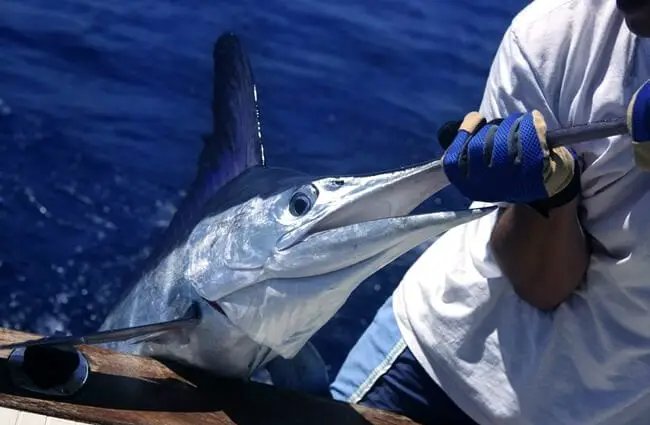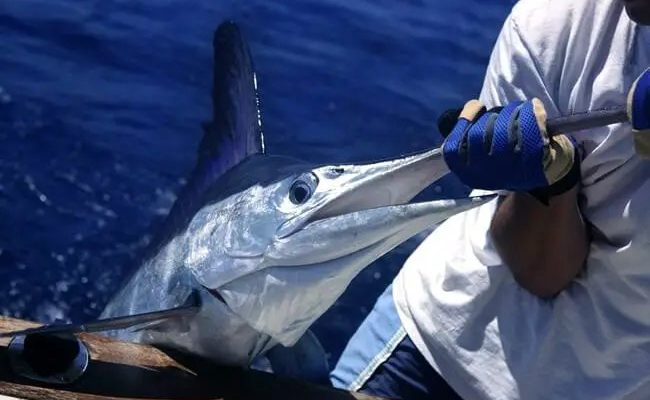
You might be wondering what exactly swordfish eat and how they hunt. Well, let me explain! The diet of swordfish is not just about filling their bellies; it’s a carefully balanced act of hunting and survival. Their feeding habits tell us a lot about their behavior and the ecosystems they inhabit. So, grab a cup of coffee and let’s dive deep into the diet and feeding habits of the swordfish.
What Do Swordfish Eat?
Swordfish are carnivorous, meaning they primarily feast on other animals. Their diet includes a variety of marine life, which keeps their nutrition diverse and balanced. So, what’s on the menu for these aquatic hunters?
- Fish: Swordfish love to snack on other fish, especially species like mackerel, herring, and even smaller swordfish. Think of it as them grabbing a quick bite at their favorite seafood restaurant.
- Squid: Squid is another staple in the swordfish diet. These cephalopods are not only tasty, but they’re also a great source of energy. Imagine swordfish swooping in like a shadow to catch squid in the blink of an eye.
- Crustaceans: While not as common, swordfish will also munch on crustaceans like shrimp and crabs when they get the chance. It’s like having a side dish with their main course.
This variety is crucial as it allows swordfish to adapt to different environments and food availability.
The Hunting Techniques of Swordfish
Swordfish are like the ninjas of the ocean. They use a combination of speed, agility, and their unique bill to hunt. But how exactly do they catch their prey? Here’s the scoop on their hunting techniques.
First off, swordfish are known for their incredible speed, reaching up to 60 miles per hour! This speed is essential when chasing quick prey like fish and squid. They often ambush their targets, darting in with a burst of energy. It’s a bit like racing down the street on a bike—you need to time your speed just right to catch up with your friends!
Another fascinating aspect is their use of their bill. The long, flat bill isn’t just for show; it’s a powerful tool. Swordfish use it to slash through schools of fish, stunning them and making it easier to catch their meal. Picture them wielding their bill like a sword in a duel, slicing through the water and the unsuspecting fish.
Finally, swordfish are known for their deep-diving abilities. They can hunt at varying depths, depending on where their prey is lurking. This adaptability is key; it’s like having a secret vault of snacks in your kitchen that you can access whenever you’re hungry.
Feeding Times and Patterns
Just like humans have breakfast, lunch, and dinner, swordfish also have their preferred feeding times. Understanding their feeding patterns can give us Insight into their behavior.
Swordfish are primarily nocturnal hunters. They tend to do most of their feeding at night when their prey, like squid, is also active. This makes sense—hunting under the cover of darkness gives them a stealthy advantage. Imagine going grocery shopping late at night when the aisles are calm and quiet. You can grab what you need without disturbance!
During the day, swordfish often stay near deeper waters, resting and conserving energy. They might also engage in a bit of vertical movement, rising to shallower depths to catch some sun. This behavior helps them balance energy expenditure and food intake.
Interestingly, the full moon can influence swordfish feeding. The increased light might make it easier for them to spot their prey or for prey to become more active, resulting in busier hunting times.
The Role of Swordfish in the Ecosystem
Every creature in the ocean plays a part in maintaining the health of the ecosystem, and swordfish are no exception. As apex predators, they help control the populations of their prey, which can prevent overpopulation and promote biodiversity.
By keeping fish and squid populations in check, swordfish help ensure that these species do not outcompete other marine life for resources. This balance is crucial for maintaining healthy fish stocks and overall ocean health. It’s like having a good friend who gently nudges you to keep your other friends in check, ensuring everyone stays on friendly terms.
However, it’s important to note that swordfish are part of a larger food web. While they may be top hunters, they themselves are preyed upon by larger animals, such as sharks and orcas. This predator-prey dynamic is essential for maintaining ecological balance.
Impact of Human Activity on Swordfish Diet
Unfortunately, human activities pose threats to swordfish populations and their natural feeding habits. Overfishing, habitat destruction, and pollution can significantly affect their diet and overall well-being.
Overfishing is a pressing concern. When swordfish are caught at unsustainable rates, it can lead to a decline in population. With fewer swordfish in the ocean, there may be more fish and squid than the ecosystem can support, throwing everything out of balance. This is a classic case of not considering the long-term effects of our actions—something we must be conscious of.
Pollution also affects the food chain. Chemical runoff can harm fish and squid populations, thus limiting the food available for swordfish. Imagine trying to find a healthy meal in a grocery store that’s run out of fresh produce. Frustrating, right?
Finally, while aquaculture (fish farming) can help meet global demand, it can also place additional pressure on wild populations. The reliance on wild-caught fish for feed in fish farming can impact the natural balance as well.
Conservation and Protection of Swordfish
Ensuring the survival of swordfish means taking measures to protect their populations and habitats. There are several ways we can support conservation efforts.
One of the most effective ways is through sustainable fishing practices. When fishermen use methods like catch-and-release, it allows the swordfish to continue thriving in their natural habitats rather than being removed from the ecosystem. Think of it as giving them a chance to keep swimming and hunting.
Additionally, supporting legislation aimed at regulating fishing quotas can help protect swordfish populations. These laws ensure that only sustainable amounts of swordfish are caught each year, allowing their numbers to recover if they decline.
Finally, raising awareness about the importance of swordfish and their role in the ecosystem is key. Educating ourselves and others about sustainable seafood choices can lead to more responsible consumption, ensuring that future generations can enjoy this magnificent creature.
The diet and feeding habits of swordfish are fascinating and critical components of their biology. From their diverse diet of fish and squid to their impressive hunting techniques, swordfish showcase the complexity of life beneath the waves. We’ve seen how they impact the ecosystem and how human activity can threaten their survival.
As we learn more about these remarkable creatures, let’s also remember our role in protecting them. By supporting sustainable practices and spreading awareness, we can help ensure that swordfish—and the ocean ecosystems they inhabit—continue to thrive for generations to come. So, next time you think of the swordfish, remember the delicate balance of nature they represent and the importance of our actions in preserving it.

